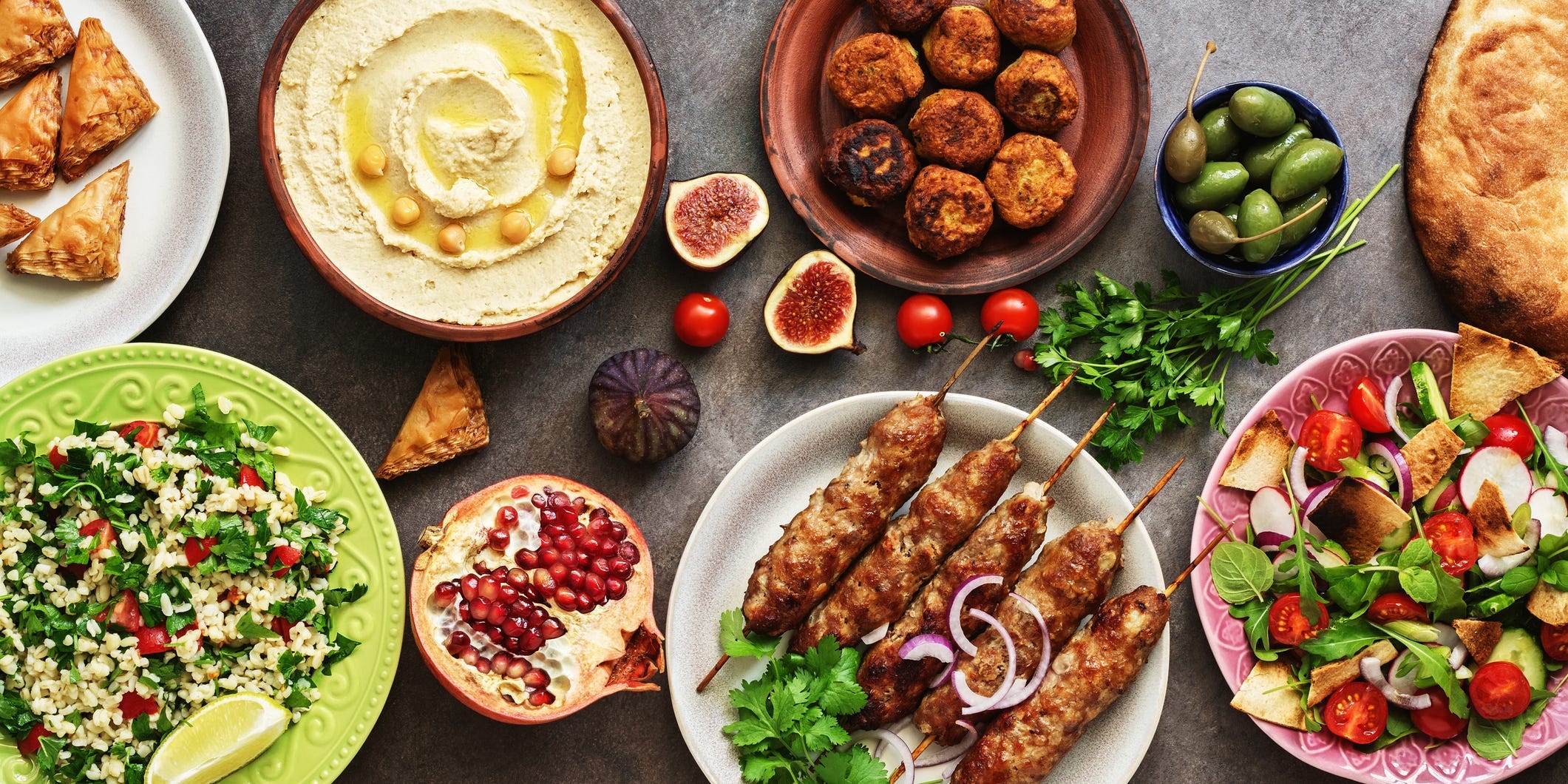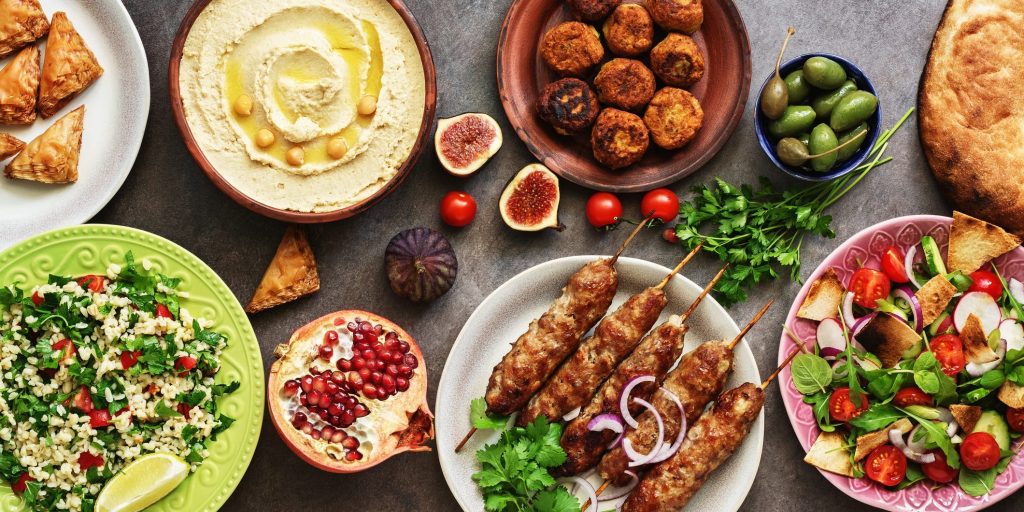
- The OMAD diet is a form of intermittent fasting where you eat in the same 1-hour window each day.
- It's recommended you consume your one meal after your most active part of the day.
- Children, elderly, and people with health conditions like diabetes should not try the OMAD diet.
- Visit Insider's Health Reference library for more advice.
The One Meal A Day (OMAD) diet is an extreme version of time-restricted eating, like intermittent fasting. However, unlike intermittent fasting, which usually allows a four or eight-hour eating window, the OMAD diet has a one-hour eating window. So you fast for the other 23 hours of the day.
Although various forms of intermittent fasting have been shown to be an effective way to shed pounds, the OMAD diet is not recommended by nutritionists and can even be dangerous for people with certain health problems. Here's what you need to know.
What to eat on the OMAD diet
The OMAD diet does not restrict the types of food or how many calories you can eat during that one-hour eating window. However, you should aim to consume the recommended amount of calories for your height, weight, age, and gender.
"Generally speaking, if only eating one time per day, one should consume the amount of calories required to meet their daily energy needs in that meal," says Kelsey Hampton, CSSD, a registered dietitian and certified specialist in sports dietetics. "Most adults should not consume under 1,200 calories per day," she says.
It sounds obvious, but getting enough calories is extremely important as too little may compromise the immune system and break down muscle mass as the body resorts to other ways to maintain energy reserves, says Hampton.
It's important to maintain proper hydration when on the OMAD diet. The diet allows water, coffee, or tea consumption throughout the day, but no other beverages, like low-calorie or diet beverages, are allowed.
It's also recommended that you eat your meal at the same time every day to ensure a consistent 23-hour fasting period.
"It would be best to consume this meal following your most active time per day. This will help your body recover from exercise and replace nutrients that may have been lost during activity," says Hampton.
To give you some idea of what a meal on the OMAD diet might look like, here are two examples of a morning and evening meal. Please note, these are merely to illustrate what a healthy meal may look like and are not recommendations.
Morning meal:
- 680 Calories: 1 cup of oatmeal (307 calories) made with 1 cup 2% milk (120 calories) topped with 1 cup fresh, sliced strawberries (53 calories), ¼ cup walnuts (200 calories)
- 685 Calories: 3-egg omelet (240 calories) with ¼ cup shredded cheddar cheese (220 calories), 1 cup spinach (7 calories), topped with one avocado (218 calories)
- 467 Calories: 1 cup of green beans (50 calories) topped with 1 ounce of shaved almonds (172 calories) and a large baked sweet potato with butter (245 calories)
- Total Calories: 1,832. You may need more or fewer calories depending on your age, weight, gender, and activity level.
Evening meal:
- 880 Calories: 300 grams of boneless, skinless chicken breast (429 calories) with 1 cup of quinoa (150 calories) and 2 cups of broccoli (61 calories) sauteed with 2 tbsp of olive oil (240 calories)
- 350 Calories: Kale salad with butternut squash, edamame, and fuji apple slices (350 calories)
- 309 Calories: 1 cup of lentil soup (169 calories) with 1 cup of roasted Brussels sprouts with parmesan (140 calories)
- 275 Calories: 1 medium banana (105 calories) with 1/4 cups almonds (170 calories)
- Total Calories: 1,814. You may need more or fewer calories depending on your age, weight, gender, and activity level.
These examples merely reflect popular breakfast and dinner options, but you can vary the foods as you see fit.
Just remember, while it may be tempting to eat whatever you want on the OMAD diet, it's recommended that you focus on nutrient-rich foods that ensure you're getting enough vitamins and minerals.
The science behind the OMAD diet
Less extreme versions of intermittent fasting that allow a four or eight-hour eating window have been shown to improve glucose tolerance, increase insulin sensitivity, and aid in weight loss. Yet, eating one unusually large meal can have the opposite effect of dieting in the first place.
One study in the journal Nutrition Reviews from 2015 cautions against extreme versions like the OMAD diet because it can lead to an abnormal increase in appetite and body fat percentage beyond where you were when you started the diet.
"When you eat once a day, you feel weak and sick. When it comes time to eat, one tends to overeat which can lead to a surge of insulin and ultimately feeling unwell," says Melissa Rifkin, a registered dietitian and owner of Melissa Rifkin Nutrition in New York City.
Who should not try the OMAD diet
Rifkin warns that the OMAD diet can be dangerous to children, elderly, and people with health conditions like diabetes. These groups need a steady intake of calories to maintain proper health. Also, people who regularly take prescription drugs should steer away from the OMAD diet because most medications require you to eat when taking them.
As for a healthy adult, "it may be safe, but that doesn't mean it is ideal," says Hampton.
Both experts, Hampton and Rifkin, say that there is just not enough research to recommend this diet as a proper weight-loss technique.
"There are healthier ways for people to eat while reaching their goals. Lean protein, plenty of produce, and quality fats and carbs can provide a broad spectrum of nutrients and can be tailored in a way to meet many different health and wellness goals," says Hampton.
Insider's takeaway
The OMAD diet is a form of intermittent fasting that restricts eating to a one-hour window every day. This means that all your daily calorie needs, depending on your age, weight, gender, and activity level, must be met during this window.
Other than low-calorie or diet beverages, there are no food or drink restrictions.
But dietitians and scientists caution against this type of extreme fasting. They say it can lead to an increase in appetite and overeating, leading to an adverse outcome for those with weight-loss goals. It can also be dangerous for children, elderly, people with certain health conditions, and people who take regular prescription drugs.
Overall, experts say there is not enough research to support recommending the diet for weight loss.
